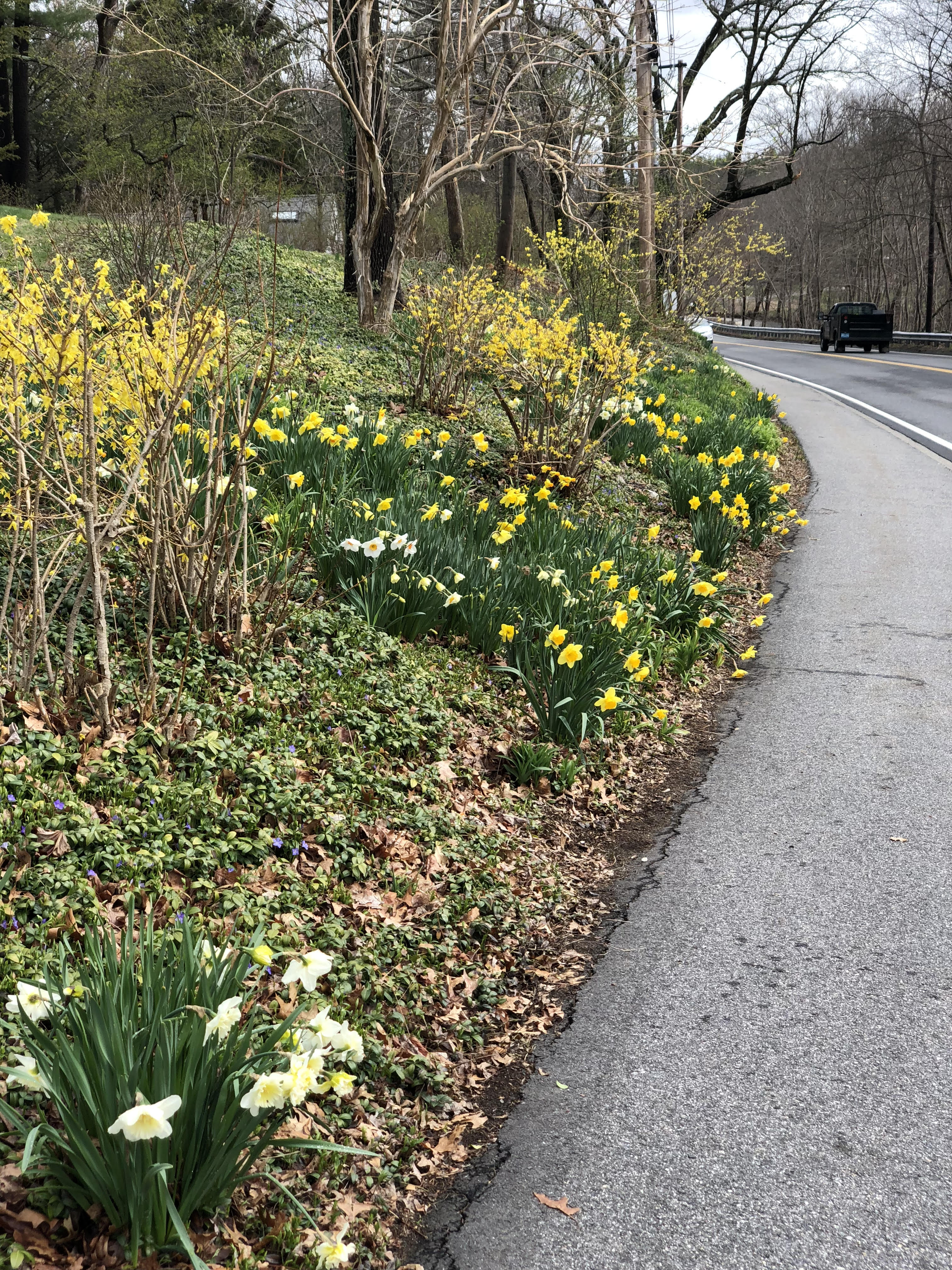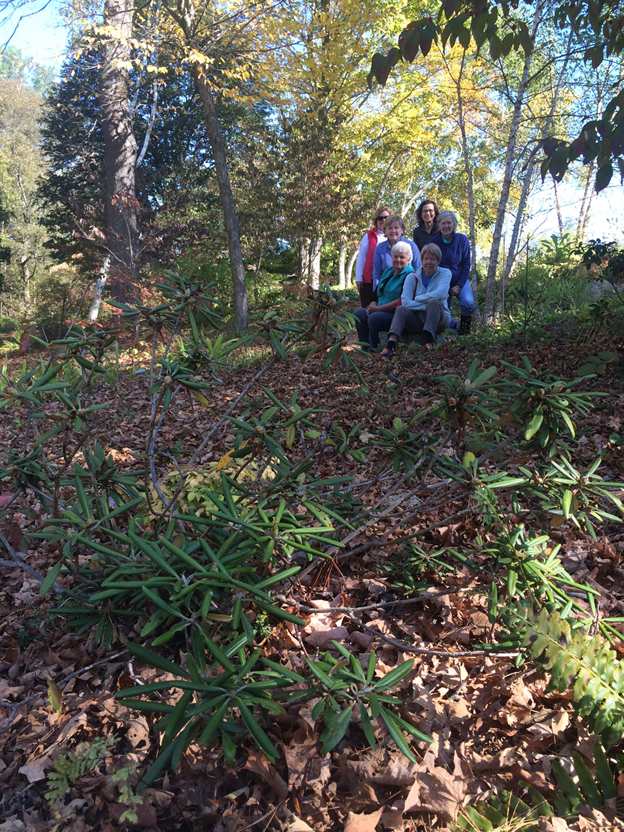Meeting House Hill Gardens
The Town of Acton, formerly part of Concord, was incorporated in 1735; one of the conditions of the act of incorporation being that a meeting house be erected within three years. In 1737 the Selectman received from Mrs. Anne Cumings the deed for the 1.75 acre lot on which the meeting house was built. This land, in the geographical center of Acton, later passed through several hands, the last being that of Mr. E.P. Bullard, who deeded it to the town for religious or historical purposes.
This land, known today as Meeting House Hill, had most recently been used for a village school which was demolished in 1960. In 1963, a stepping stone from the 1737 Meeting House was returned to the site, and the Acton Garden Club was approached by the Selectman and asked to place some plantings around it. In investigating the area, the Acton Garden Club became interested in its possibilities for development in to a park with special historical significance.
With the approval of the Selectman, the Acton Garden Club commissioned landscape architect Dorothea Harrison of Concord to prepare a plot plan for landscaping the site. In 1964 the Acton Garden Club entered this project in the Bay State Beautification Program contest co-sponsored by Sears Roebuck & Company and the Garden Federation of Massachusetts, and became the First Prize Winner of $200 “seed money”.
These initial funds were augmented by donations from civic groups, community businesses and individuals. The land was cleared, graded and seeded, flowering trees and shrubs were planted, and a wild flower garden was established in the woodland area.
Meeting House Hill is maintained by the Acton Garden Club and the Municipal Properties section of the Town of Acton and is located at the corner of Main Street and Nagog Hill Road.
Daffodil Run
Located on the embankment along Main Street near Nagog Hill Road, Daffodil Run is the more visible garden of Meeting House Hill. This historically sited garden displays massive plantings of daffodils, Forsythia, and daylilies, with flowering shrubs in the upper garden area. It is a spectacular showcase of gorgeous spring and early summer blooms. In recent years, two smaller garden areas have been developed with smaller plants and flowering bulbs nestled amongst ledge outcrops.
Although at its best during spring, the garden provides color and interest in autumn when the Heptacodium and Sedums are flowering. New plant material continues to be added to the garden in keeping with its original design.

The Wildflower Garden
The Wildflower Garden remains little known in our town. Recaptured from an area that was once the school’s ash pile, the soil has been improved over many years with compost and with paths covered with mulch.
The garden is separated into beds, each of which has a different focus: Cypripedium and Trillium; Epimedium, Iris species, Phlox and Myosotis; purple and white Anemones and Lunaria; lily of the valley and ferns. Generous gifts of Azaleas and Rhododendrons from Fred Knipple are planted throughout the garden. Native understory trees, including three Cornus species, Cotinus, Stewartia, and Franklinia, can be found throughout the garden.
A visit in early April reveals Hellebores in bloom and our magnificent harbinger of spring, Adonis. Two weeks later, trout lilies are all about, the unusual Jeffersonia are in bloom and swaths of bloodroot are making their appearance. Visit the next week and the Epimedium will be shooting up flower stalks, Trillium buds are emerging and shooting stars (Dodecatheon) will be heading skyward. The garden evolves well into fall.
The Wildflower Garden team maintains a propagation bed at the rear of the garden that contains Japanese maple and dogwood seedlings. In addition, choice plants like Trillium are propagated to ensure their continued presence in the garden. Over 100 plants from the Wildflower Garden are contributed to the Plant Sale each year.

